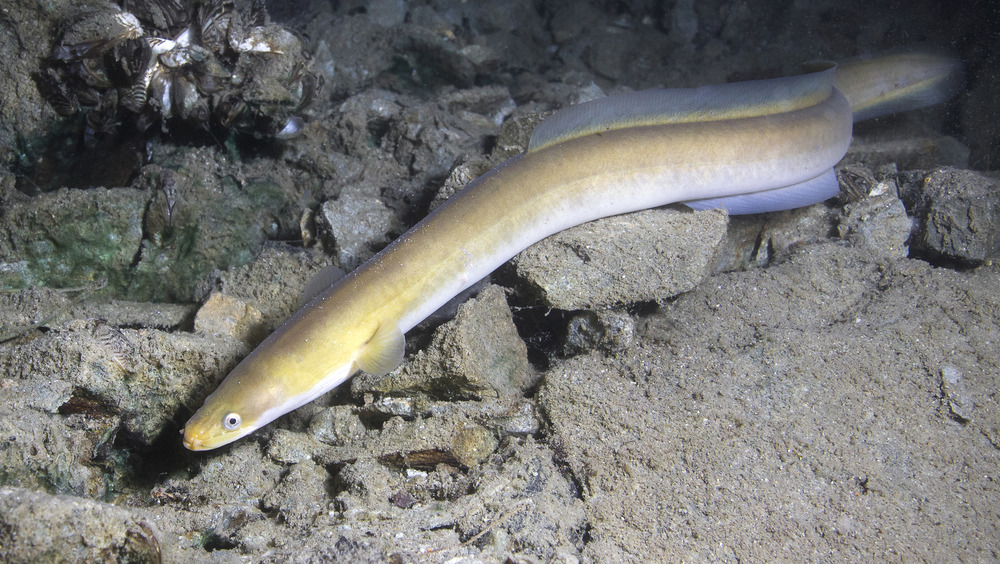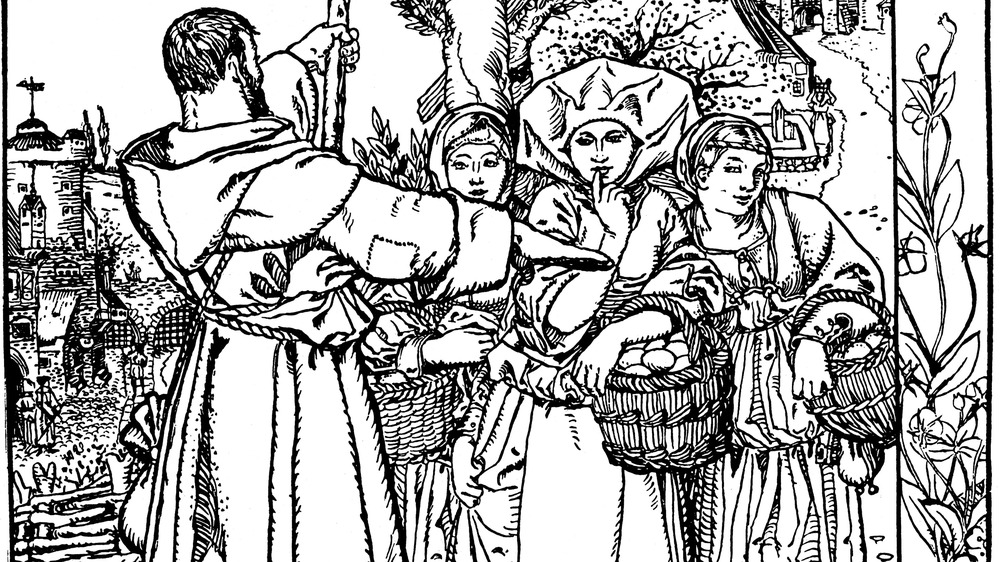This Is How Eels Powered The Economy In Medieval England
In Medieval England — around the 5th to the 15th century, says Britannica — coins were still rare, so it was fairly common to trade certain valuable goods, like grain and eggs, in exchange for payment. And in the Middle Ages, there was one form of payment that stood out from the others: eels. Tenants used eels to pay their rent, with more than 540,000 eels being paid to English lords by the end of the 11th century, according to History Extra.
Eels made up 20-25 percent of the fish in England's rivers. When they traveled downstream for their yearly migration in the autumn, peasants would trap, kill, and then cure the eels, so they would be preserved until rent payment was due in the early spring. Curing the eels also made it easier to transport and exchange the fare, without having to worry about spoilage.
The eels weren't just plentiful. They were valuable because they were an easy and nutritious source of protein that still conformed to the Catholic Church's strict ban on eating meat during Lent, the period of penance before Easter.
Eels served as a form of currency in Medieval England
Catholics were expected to practice abstinence — refrain from sex — during Lent. Meat was thought to excite people's libidos, so they had to abstain from meat as well. Fish, and especially eels, however, were not believed to encourage carnal desires, and so were fine to eat. Because eels only develop sex organs at the end of their life, they were thought to be asexual and therefore an ideal Lenten dish.
The eels weren't just a valuable source of food, however. They became their own de facto currency, and landlords who received eels as payment could turn around and use them to pay for purchases. For example, monks at the Ramsey Abbey in Huntingdonshire traded 4,000 eels in exchange for access to the limestone quarries at Peterborough Abbey, according to History Extra.
Throughout the 13th century, eel payments continued to drive the economy, but after the Black Death, eels rents gave way to other forms of payment. Meat became more readily available as a greater number of people converted farmland into pastures, and demand for eels dropped. Eel payments steadily declined until around 1500, when the practice disappeared almost entirely.

